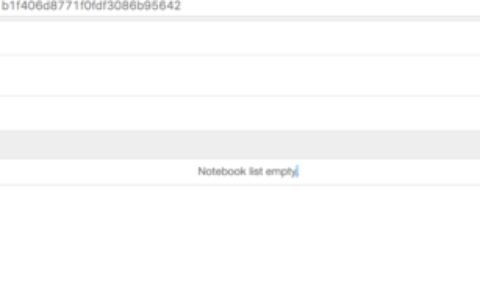TensorFlow之将模型网络导出为单个文件的方法
在使用TensorFlow进行深度学习模型训练时,我们可能需要将模型网络导出为单个文件,以便后续使用或部署。本文将提供一个完整的攻略,详细讲解如何将TensorFlow的模型网络导出为单个文件,并提供两个示例说明。
如何将TensorFlow的模型网络导出为单个文件
在将TensorFlow的模型网络导出为单个文件时,我们可以使用tf.keras.models.save_model()函数将模型保存为单个文件。下面是如何将TensorFlow的模型网络导出为单个文件的步骤:
- 训练TensorFlow模型
在将TensorFlow的模型网络导出为单个文件之前,我们需要训练TensorFlow模型。例如:
import tensorflow as tf
# 训练TensorFlow模型
model = tf.keras.Sequential([
tf.keras.layers.Dense(10, input_shape=(784,), activation='softmax')
])
model.compile(optimizer='adam', loss='categorical_crossentropy', metrics=['accuracy'])
model.fit(x_train, y_train, epochs=10, batch_size=32, validation_data=(x_test, y_test))
在这个示例中,我们使用tf.keras.Sequential()函数定义一个简单的神经网络模型,使用model.compile()函数编译模型,使用model.fit()函数训练模型。
- 将TensorFlow模型导出为单个文件
在训练TensorFlow模型后,我们可以使用tf.keras.models.save_model()函数将模型导出为单个文件。例如:
import tensorflow as tf
# 训练TensorFlow模型
model = tf.keras.Sequential([
tf.keras.layers.Dense(10, input_shape=(784,), activation='softmax')
])
model.compile(optimizer='adam', loss='categorical_crossentropy', metrics=['accuracy'])
model.fit(x_train, y_train, epochs=10, batch_size=32, validation_data=(x_test, y_test))
# 将TensorFlow模型导出为单个文件
tf.keras.models.save_model(model, 'model.h5')
在这个示例中,我们使用tf.keras.models.save_model()函数将TensorFlow模型导出为单个文件。文件名为model.h5,可以根据需要进行更改。
示例1:将MNIST模型网络导出为单个文件
下面的示例展示了如何将MNIST模型网络导出为单个文件。
import tensorflow as tf
# 加载MNIST数据集
(x_train, y_train), (x_test, y_test) = tf.keras.datasets.mnist.load_data()
x_train, x_test = x_train / 255.0, x_test / 255.0
# 训练MNIST模型
model = tf.keras.Sequential([
tf.keras.layers.Flatten(input_shape=(28, 28)),
tf.keras.layers.Dense(128, activation='relu'),
tf.keras.layers.Dropout(0.2),
tf.keras.layers.Dense(10, activation='softmax')
])
model.compile(optimizer='adam', loss='sparse_categorical_crossentropy', metrics=['accuracy'])
model.fit(x_train, y_train, epochs=5, batch_size=32, validation_data=(x_test, y_test))
# 将MNIST模型网络导出为单个文件
tf.keras.models.save_model(model, 'mnist_model.h5')
在这个示例中,我们使用tf.keras.datasets.mnist.load_data()函数加载MNIST数据集,使用model.fit()函数训练MNIST模型,使用tf.keras.models.save_model()函数将MNIST模型网络导出为单个文件。
示例2:将CIFAR-10模型网络导出为单个文件
下面的示例展示了如何将CIFAR-10模型网络导出为单个文件。
import tensorflow as tf
# 加载CIFAR-10数据集
(x_train, y_train), (x_test, y_test) = tf.keras.datasets.cifar10.load_data()
x_train, x_test = x_train / 255.0, x_test / 255.0
# 训练CIFAR-10模型
model = tf.keras.Sequential([
tf.keras.layers.Conv2D(32, (3, 3), activation='relu', input_shape=(32, 32, 3)),
tf.keras.layers.MaxPooling2D((2, 2)),
tf.keras.layers.Conv2D(64, (3, 3), activation='relu'),
tf.keras.layers.MaxPooling2D((2, 2)),
tf.keras.layers.Conv2D(64, (3, 3), activation='relu'),
tf.keras.layers.Flatten(),
tf.keras.layers.Dense(64, activation='relu'),
tf.keras.layers.Dense(10, activation='softmax')
])
model.compile(optimizer='adam', loss='sparse_categorical_crossentropy', metrics=['accuracy'])
model.fit(x_train, y_train, epochs=5, batch_size=32, validation_data=(x_test, y_test))
# 将CIFAR-10模型网络导出为单个文件
tf.keras.models.save_model(model, 'cifar10_model.h5')
在这个示例中,我们使用tf.keras.datasets.cifar10.load_data()函数加载CIFAR-10数据集,使用model.fit()函数训练CIFAR-10模型,使用tf.keras.models.save_model()函数将CIFAR-10模型网络导出为单个文件。
结语
以上是如何将TensorFlow的模型网络导出为单个文件的完整攻略,包含了训练TensorFlow模型、将TensorFlow模型导出为单个文件的步骤,以及将MNIST模型网络导出为单个文件和将CIFAR-10模型网络导出为单个文件的示例。在将TensorFlow的模型网络导出为单个文件时,我们可以使用tf.keras.models.save_model()函数将模型保存为单个文件。
本站文章如无特殊说明,均为本站原创,如若转载,请注明出处:将TensorFlow的模型网络导出为单个文件的方法 - Python技术站


 微信扫一扫
微信扫一扫  支付宝扫一扫
支付宝扫一扫 
